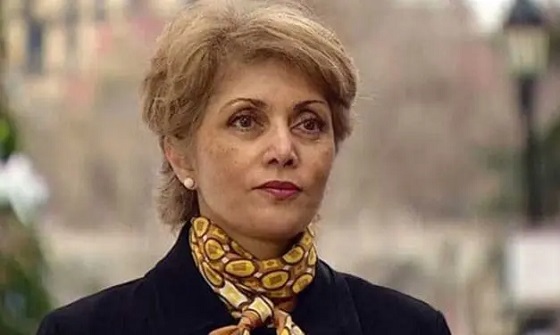Alberta
Investigation concludes suspect convinced girlfriend to lie to police

News Release from ASIRT (Alberta Serious Incident Response Team)
Investigation concluded into use of force during EPS arrest
On Aug. 1, 2018, pursuant to Section 46.1 of the Police Act, the Director of Law Enforcement (DLE) assigned ASIRT to investigate the circumstances surrounding a vehicle pursuit and subsequent arrest of a 31-year-old man. The man had been arrested by members of the Edmonton Police Service (EPS) on July 30 following a brief vehicle pursuit which had resulted in serious injury to an uninvolved pedestrian, and was terminated by intentional contact made by two EPS vehicles.
As is required by the Police Act, these events were reported to the DLE and, based on the information that was known at the time, EPS was directed to maintain conduct of the investigation. Several days later, while being interviewed in relation to that investigation, the man alleged that he had been assaulted during the course of his arrest and had sustained several injuries. This additional information was again reported to the DLE, and ASIRT was directed to assume conduct of the investigation into both the pursuit and any force used during the subsequent arrest of the affected person.
On July 30, 2018, at approximately 12:30 a.m., EPS members operating a marked police vehicle conducted a database check on a red Buick Rendezvous SUV, which revealed the vehicle’s licence plate had been reported stolen. Members followed the vehicle without activating their emergency equipment until the SUV stopped and the driver, later identified as the 31-year-old man, exited. Police then activated their vehicle’s emergency equipment, but the man re-entered the SUV and drove away at a high rate of speed.
Police followed the SUV with emergency equipment activated, and observed the SUV run a red light at 101 Street and 107 Avenue. At this point, several other EPS vehicles had entered the area and additional members were able to observe the SUV. During its flight from police, the vehicle mounted the sidewalk at 102 Street and struck a female pedestrian and a light post. Officers who observed the collision formed the opinion that the collision with the pedestrian was deliberate. Overt action had been required to mount the sidewalk and strike the pedestrian, who was standing in a well-lit area. As well, the man’s vehicle had had an unobstructed path forward with no observable reason or cause to leave the roadway and mount the sidewalk.
After striking the pedestrian and the pole, the SUV continued east on 107 Avenue, with police continuing pursuit. A second EPS vehicle remained at the scene of the collision to render aid to the female pedestrian, who had sustained numerous serious injuries. Having witnessed what appeared to be the deliberate use of the SUV to strike a pedestrian, the driver of the lead EPS vehicle indicated that he believed it was necessary to attempt to end the criminal flight using deliberate vehicle contact. He deliberately struck the rear driver’s side of the SUV, but this tactic failed to stop the vehicle. A marked police van subsequently made deliberate contact with the SUV, this time striking it head-on, and brought the SUV to a halt. The man exited the driver’s seat of the SUV and fled on foot southbound on 103 Street.
Three police officers pursued the man on foot. During this pursuit, the lead officer deployed his conducted energy weapon (CEW), which was successful in bringing the man to the ground. The officer verbally commanded the man to roll onto his stomach, as he had turned onto his back. The man was initially compliant, but resisted when officers attempted to handcuff him. The officer reactivated the CEW, and the man was handcuffed while the CEW was still activated.
Once in custody, the man was observed to be sweating profusely, making spastic movements and acting in a manner that indicated to the arresting officers that he was under the influence of methamphetamine. Accordingly, after searching him, EMS transported the man to hospital.
Medical records obtained during the course of the ASIRT investigation confirmed that at the time of his examination at hospital, the man had a two-centimetre laceration to his forehead which was not actively bleeding, two abrasions on his shoulder area and mild swelling of the front of his head. A CT scan revealed the presence of an age-indeterminate nasal fracture, meaning that doctors were unable to determine whether the nasal fracture had occurred during this event or earlier. Medical staff determined that the man was fit for incarceration, and released him from hospital that same day.
As previously indicated, shortly after he was incarcerated, EPS interviewed the man in the course of their investigation. During that interview, the man described his arrest, discussed his injuries, and asked the interviewer about the condition of the woman he had hit during the incident. Once ASIRT assumed conduct of the investigation, the man was interviewed again – this time by an ASIRT investigator. The man described his flight from police and the collision with the pedestrian but stated that a police vehicle had struck him before the collision with the pedestrian. He also stated that he did not remember hitting anyone.
The man stated that his girlfriend ran away from police following the collision but stopped to watch his arrest. He stated that she told him that at one point six police officers were beating him. The man stated that he did not remember this, but recommended that ASIRT interview his girlfriend. He further stated that at the time of the incident he was under the influence of methamphetamine, which he had used approximately five hours before the incident. He stated that his girlfriend was under the influence of heroin, which she had consumed approximately one hour before the incident.
The man’s girlfriend was interviewed twice during the course of this investigation, once by EPS and once by ASIRT. During the first interview by EPS, she stated that she had been the lone passenger in the vehicle being operated by her boyfriend. She indicated that he had lost control of the vehicle while turning and began to drive on the sidewalk before striking a lamppost. She stated that neither of them was aware at the time that they had struck a pedestrian. During the statement, she indicated that when the final collision with the police vehicle occurred, the man jumped out of the vehicle first and was pursued by police. She stated that she ran from the scene to a friend’s house, where, through a third party, she contacted her boyfriend in jail, but advised that they did not discuss the incident. In addition to describing the events, she confirmed the man’s statements regarding her use of heroin prior to the incident.
The next day, after the case was assigned to ASIRT, the man’s girlfriend was interviewed again by ASIRT investigators. During this interview, she confirmed that she had recently spoken to her boyfriend and now suggested that the police had struck the SUV, causing the collision with the pedestrian and minimizing the man’s role in the incident. She now stated that following the final collision, she ran and hid under a car that was approximately 10 to 20 metres away. As she watched her boyfriend’s arrest, she alleged she saw police assault him.
As a result of the discrepancies between their various versions of the incident and the conversations that took place between them after the man’s arrest, ASIRT investigators took the unusual step of obtaining a judicial authorization for access to the man’s communications while in custody at the Edmonton Remand Centre. The recorded calls revealed repeated attempts by the man to influence the evidence of his girlfriend in conversations directly with her and with other parties. On several occasions, the man referenced the impact that her assistance would have on his chances of getting bail on the charges arising from the incident. During two of the calls, the man’s girlfriend described the striking of the pedestrian, saying that she remembered her being in the way, running and screaming. The man advised her to downplay that aspect of the story when dealing with the police, and to state that she was not sure of the details.
During the calls, the man repeatedly exaggerated the extent of his dealings with police, stating that he had smashed four police vehicles, that he had four CEWs used upon him, had received four broken bones in his face during the incident, and had sustained dog bites during his arrest. His girlfriend’s response to these statements clearly demonstrated that she had not witnessed the arrest. It appeared that in a number of the exchanges, the man attempted to instil fear in his girlfriend in order to ensure her cooperation, and encouraged her to turn herself in to police, which he repeatedly suggested would help him.
In addition to the recorded calls, the independent evidence of three civilian witnesses and CCTV video from an area business confirmed that the man’s girlfriend did not witness his arrest as described in her second statement, but rather had immediately fled the area as she had initially described.
Despite being under no obligation to do so, each of the three police officers directly involved in the arrest of the man provided voluntary statements to ASIRT for use during the investigation. One officer acknowledged deploying his CEW during the foot pursuit of the man, which resulted in the man falling to the ground. When the man continued to struggle on the ground, and was described as actively resistant, the officer reactivated his CEW, which allowed him, with the assistance of the other two involved officers, to place the man in handcuffs. The three officers directly involved in the man’s arrest, along with all witness officers interviewed, denied participating in or witnessing any significant use of force as described by the man and his girlfriend.
On the basis of the information available to police during this incident, they were lawfully placed to arrest the man in relation to a number of Criminal Code offences, including possession of stolen property and criminal flight causing bodily harm. As the officers were engaged in the lawful execution of their duty, they were authorized by Sec. 25 of the Criminal Code to use a reasonable amount of force necessary to carry out their duties.
While the description of the amount of force used during the incident varies widely between the descriptions provided by police and the man and his girlfriend, when looking at the evidence in this matter as a whole, it is impossible to place any weight whatsoever on the versions offered by the man and his girlfriend.
In addition to the significant inconsistencies between the versions offered by both the man and his girlfriend in their own multiple statements, which would on their own significantly compromise the ability to rely upon their evidence, the recorded attempts by the man to influence the evidence of his girlfriend in hopes of convincing her to tailor her evidence to match his own is fatal to the credibility of both witnesses. Independent evidence conclusively established that the girlfriend was not present to witness the arrest.
Based on the available reliable evidence, the force used to arrest the man was both reasonable and necessary. Once restrained in handcuffs, there were no additional uses of force, and the man was taken into custody without further incident. Furthermore, it is clear from an assessment of all the evidence in this matter that the cause of the initial collision with the pedestrian was the man’s deliberate driving pattern and that there was no physical contact with the SUV by any police vehicle before the pedestrian was struck.
There are no reasonable grounds, nor reasonable suspicion, to believe that any of the officers committed any Criminal Code offence(s). The officers were lawfully placed in their actions with the man, and the force employed was reasonable and necessary in the circumstances. As such, no charges are appropriate, and ASIRT’s involvement in the matter is concluded.
ASIRT’s mandate is to effectively, independently and objectively investigate incidents involving Alberta’s police that have resulted in serious injury or death to any person, as well as serious or sensitive allegations of police misconduct.
Alberta
Tell the Province what you think about 120 km/h speed limit on divided highways

Alberta’s government is engaging with Albertans on increasing speed limits on rural highways.
Starting Nov. 7, Albertans can share their views on modernizing speed limits on divided highways through an online survey running until Dec. 12. The survey will ask how Albertans view raising the speed limit by 10 km/h on various highways from 110 km/h to 120 km/h.
“Alberta’s government is investigating how to safely increase speed limits on divided highways, and if Albertans support increasing speed limits. We are investing more than $1.5 billion this year alone to improve highway safety and upgrade infrastructure across the province. We want Albertans to be able to drive the speed limit that the highways are designed for. Modern vehicles combined with public awareness mean we can explore higher speed limits.”
The survey will provide Albertans with the opportunity to provide input on which highways they would prioritize having a speed limit increase, their views on restricting commercial trucks from using the far-left lane on highways with three or more lanes and any other feedback that would improve driving experiences on provincial highways.
Following a review of the survey results, Alberta’s government plans to conduct a mini-trial of a 120 km/h speed limit to assess the impacts of higher speed limits on divided highways. The trial will include strong monitoring to assess driving behaviour.
Alberta’s government reminds motorists to slow down and drive to the conditions. Speed limits are set for ideal conditions. When roads are wet, icy or when there is reduced visibility, motorists should slow down.
Quick facts
- Alberta’s provincial highway network includes more than 64,000 lane kilometres of highways, about 11,700 lane kilometres of which are divided.
- The posted speed limits of Alberta’s divided highways range from 100 to 110 km/h, although the posted speed limits on segments passing through cities, towns and First Nation lands can be as low as 50 km/h due to factors such as signalized intersections, pedestrians and local access.
Related information
- The survey is available online.
Alberta
Alberta Announces Members of Class Size and Complexity Committee

A new Class Size and Complexity Cabinet Committee has been struck to address classroom challenges.
Taking action on class size and complexity
Classrooms in Alberta continue to grow and are becoming increasingly complex, and immediate action is needed to address these issues in the public education system. To meet these issues head on, the Class Size and Complexity Cabinet Committee has been created. The cabinet committee will help guide government policy and deploy resources to deal with class sizes and classroom complexity.
“We are committed to providing world-class education, and we’re building schools and funding education at a rate unprecedented in this province. This committee will help us address the concerns of teachers, parents and students around class sizes and complexity.”
Throughout November, Alberta’s government will continue work with school boards to collect data on class sizes and classroom composition. The cabinet committee will use this data to direct resources to the classrooms that need it the most. Starting in January, this data will be made available and released annually.
The Class Size and Complexity Cabinet Committee will be co-chaired by the Premier of Alberta and the Minister of Education and Childcare. It will also include non-voting members representing school boards, administrators and a teacher representative of the ATA. The committee will also hear from school boards, academic experts, teachers, educational assistants, complex needs specialists and parents to inform its decisions and guide this vital work.
“We heard teacher concerns, and we are providing solutions. The Class Size and Complexity Cabinet Committee will help us take immediate action and ensure teachers and students are given the support they need to succeed.”
In June 2025, Alberta’s government established the Aggression and Complexity in Schools Action Team to provide advice on addressing classroom complexity. The report has been received and will be released soon. Over the coming months, the cabinet committee will start rolling out solutions informed by the action team’s recommendations. In addition, the committee will guide the creation of a new inclusive education policy framework.
“The work of this committee will support teachers in responding to the growing complexity in our classrooms. We will ensure that the voices of the contributors to the initial work guide
solutions that truly improve the educational experience for students and the educators who serve them.”
“I appreciate the government’s recognition of the impact of classroom complexity and their commitment to working collaboratively for improvement. Supporting teachers ultimately improves classroom conditions and student outcomes.”
Using data collected, this cabinet committee will also guide Alberta’s government in executing its commitment to hire 3,000 new teachers and 1,500 new educational assistants over the next three years. They will also assist in identifying and prioritizing where new schools and modulars should be built, advancing the government’s commitment to invest $8.6 billion to build 130 new schools, and provide 109 modular classrooms in the growing communities that need them urgently.
Quick facts
- Members of the Class Size and Complexity Cabinet Committee include:
- Danielle Smith, Premier of Alberta
- Demetrios Nicolaides, Minister of Education and Childcare
- Jason Nixon, Minister of Assisted Living and Social Services
- Rick Wilson, Minister of Mental Health and Addiction
- Searle Turton, Minister of Child and Family Services
- Lynnette Anderson, chief superintendent, Edmonton Catholic Schools
- Nicole Buchanan, chair, Red Deer Public Schools
- Marilyn Dennis, former president of Alberta School Boards Association
- Mike McMann, superintendent, Fort Vermilion Schools and President, College of Alberta School Superintendents
- Joanne Pitman, chief superintendent, Calgary Board of Education
- Dr. Elissa Corsi, Alberta Teachers’ Association
- Only Cabinet members are voting members. Additional guests will be invited to attend and share their expertise at the discretion of the chairs.
- School boards will be required to submit data on Alberta classrooms by Nov. 24.
-

 Justice2 days ago
Justice2 days agoCarney government lets Supreme Court decision stand despite outrage over child porn ruling
-

 COVID-192 days ago
COVID-192 days agoFreedom Convoy leader Tamara Lich to appeal her recent conviction
-

 Daily Caller2 days ago
Daily Caller2 days agoUN Chief Rages Against Dying Of Climate Alarm Light
-

 Business2 days ago
Business2 days agoCarney’s budget spares tax status of Canadian churches, pro-life groups after backlash
-

 Business2 days ago
Business2 days agoU.S. Supreme Court frosty on Trump’s tariff power as world watches
-

 Business22 hours ago
Business22 hours agoCarney budget continues misguided ‘Build Canada Homes’ approach
-

 espionage1 day ago
espionage1 day agoU.S. Charges Three More Chinese Scholars in Wuhan Bio-Smuggling Case, Citing Pattern of Foreign Exploitation in American Research Labs
-

 Business22 hours ago
Business22 hours agoCarney budget doubles down on Trudeau-era policies










